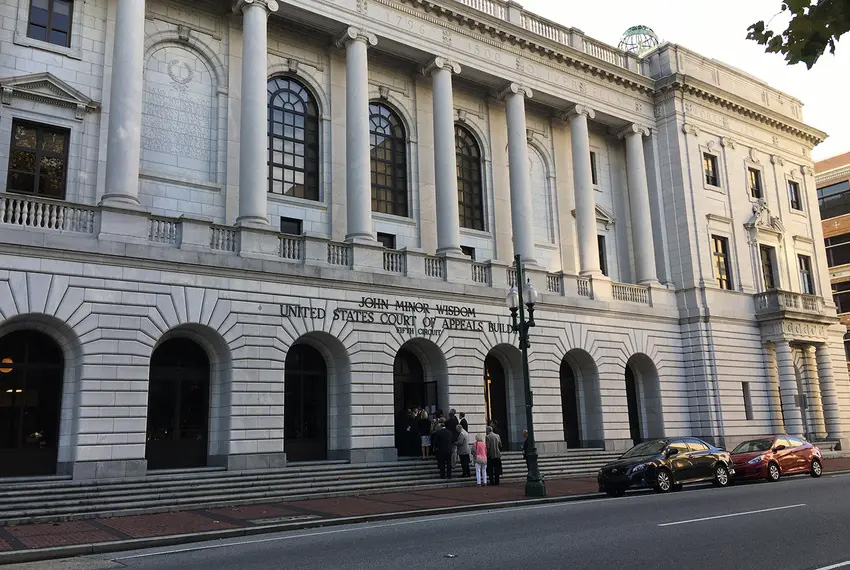From The Texas Tribune:
If the 5th U.S. Circuit Court of Appeals was a boxer, you’d bet on the other guy.
The 5th Circuit, which hears appeals from Texas, Louisiana and Mississippi, had three rulings upheld by the U.S. Supreme Court, and eight overturned, more than any other court this term. The conservative circuit court saw its rulings on abortion medication, gun control, administrative power and social media moderation all rejected by the Supreme Court.
Justice Brett Kavanaugh cautioned that the 5th Circuit was taking the judiciary down “an uncharted path.” Chief Justice John Roberts said they were “slaying a straw man.” Justice Clarence Thomas, the most conservative member of the court, authored two opinions rejecting the 5th Circuit’s interpretation of the law.
The New Orleans-based 5th Circuit leaned to the right even before President Donald Trump appointed six judges to the bench. The new judges, many of whom trained in Texas’ conservative legal circles, have attracted a slew of ideologically-aligned cases.
“One of the most conservative Supreme Courts we’ve ever had is still repudiating right-leaning decisions from the most conservative appeals courts in the country,” said Steve Vladeck, a law professor at Georgetown University. “But even then, it’s doing so in cases that should never have gotten to the Supreme Court in the first place.”
Just because these rulings ultimately got knocked down at the Supreme Court doesn’t mean the 5th Circuit is toothless, Vladeck said.
“These rulings have the effect of taking legal theories that were off the wall, and putting them on the wall,” he said. “Even when they’re losing, the effect is to make these cases of national import and give credibility to those arguments.”
The Texas two-step
The story of how the 5th Circuit comes to rule on so many conservative cases starts far away from the John Minor Wisdom federal courthouse in New Orleans. It starts in a handful of district courts in remote parts of the three-state region, where, due to geography and population distribution, only one federal judge hears all or nearly all of the cases.
In Amarillo, it’s U.S. District Judge Matthew Kacsmaryk. In Lubbock, Judge Wesley Hendrix. In Victoria, Judge Drew Tipton. These judges share something beyond professional isolation — they were all appointed by Trump based on their conservative legal bonafides.
When a group of anti-abortion doctors wanted to revoke the Food and Drug Administration’s approval of mifepristone, a common abortion-inducing drug, they filed the case in Amarillo.
Kacsmaryk’s ruling, in which he referred to doctors as “abortionists” and the process of a medication abortion as “starv[ing] the unborn human until death,” was unprecedented in revoking a medication’s long-standing FDA approval. Kacsmaryk overruled the government’s argument that the doctors who brought the lawsuit did not have the legal right to sue, known as standing.
“The associations’ members have standing because they allege adverse events from chemical abortion drugs can overwhelm the medical system and place ‘enormous pressure and stress’ on doctors during emergencies and complications,” Kacmsaryk wrote.
This ruling would have resulted in mifepristone being removed from the market, throwing abortion and miscarriage care into chaos nationwide. But the U.S. Supreme Court intervened, ruling that the medication could remain on the market while the case moved through the system.
The case then went to the 5th Circuit. The three-judge panel, two Trump appointees and one President George W. Bush appointee, agreed that the plaintiffs did have standing to sue. The appeals court ruling would have allowed mifepristone to remain on the market with significant restrictions.
In its first abortion ruling after overturning Roe v. Wade, the Supreme Court unanimously rejected the 5th Circuit’s ruling and found the doctors who sued did not have standing. Justice Kavanaugh, a Trump appointee, quoted conservative legal icon Justice Antonin Scalia in authoring the opinion.
“As Justice Scalia memorably said, [standing] requires a plaintiff to first answer a basic question: ‘What’s it to you?’” Kavanaugh wrote. “For a plaintiff to get in the federal courthouse door and obtain a judicial determination of what the governing law is, the plaintiff cannot be a mere bystander, but instead must have a ‘personal stake’ in the dispute.”














